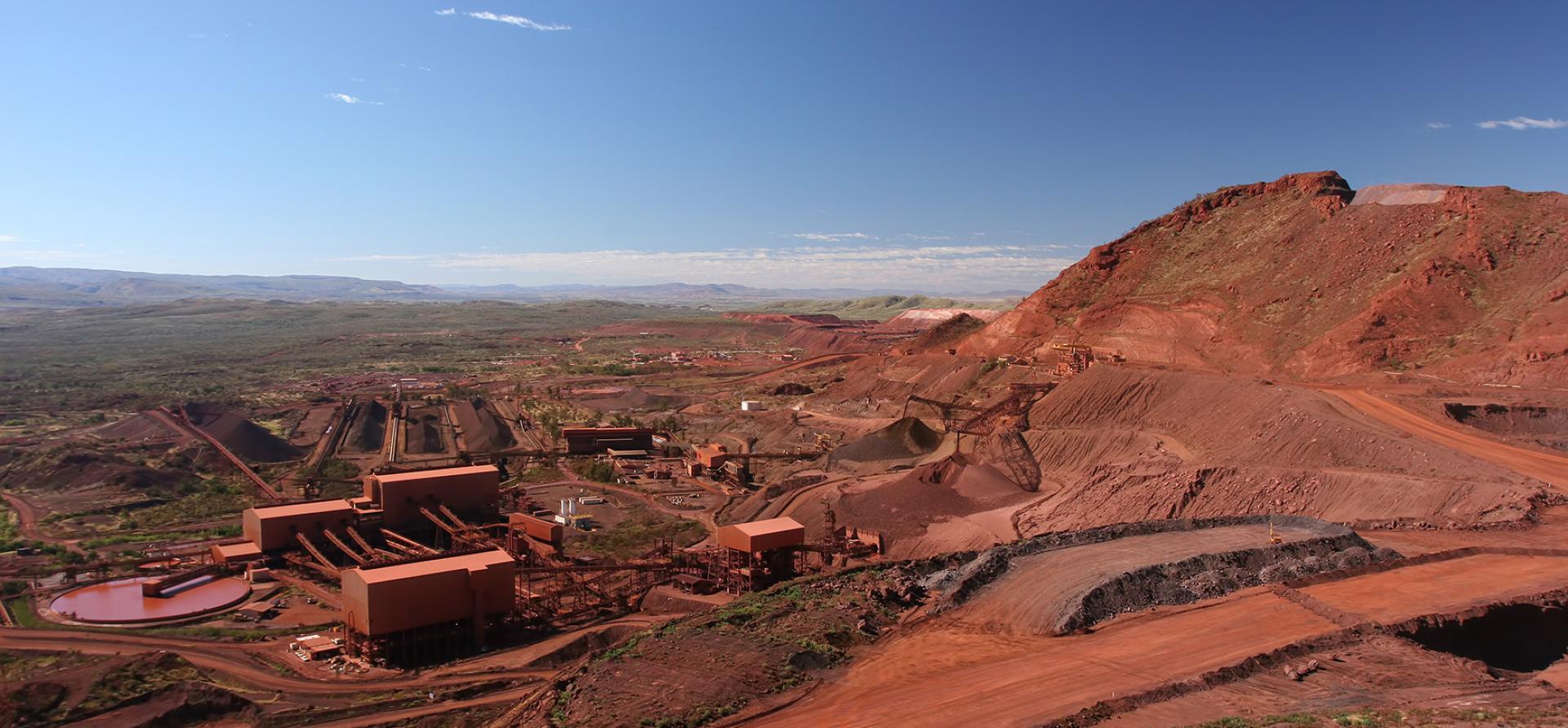Opportunities and challenges for the Pilbara amid the accelerating steel technology transition

Key Findings
In Australia, domestic use of green hydrogen to make green steel or iron for export may make more sense than the current focus on producing green hydrogen for export, which has transportation challenges.
Australia has potential to be a leading supplier of decarbonised iron, the critical material for green steel production, if it acts fast in the face of growing international competition.
If Australian mining companies want to secure a leading position in the future market of green steel raw materials, they must accelerate their research efforts on improving the quality of Pilbara iron ore to make it suitable for direct reduction-based ironmaking.
Accelerating plans for global steel decarbonisation and the potential long-term impacts on the Pilbara are occurring within the context of China’s efforts to reduce reliance on Australian iron ore and peak Chinese steel demand.
Former RBA Deputy Governor and Fortescue Future Industries director, Guy Debelle, has raised concerns that Australia might lose the race to build a green hydrogen industry to other contenders including the US and the Middle East due to a lack of investment and supportive policies. He has emphasised the need for government support and incentives, citing the Biden administration’s Inflation Reduction Act (IRA) and significant investment in green hydrogen in Middle Eastern countries.
Based on the IRA, green hydrogen producers in the US can earn a US$3/kg production tax credit. This means the cost of production could go below US$1/kg, making it competitive with fossil fuel-based hydrogen production.
Most of the focus on green hydrogen in Australia is on exports, yet there are key doubts about the role of green hydrogen exports in a decarbonised future.
Green hydrogen may not be a viable solution for the energy transition across all sectors, due in part to its low volumetric energy density and transportation difficulties.
Green hydrogen may not be a viable solution for the energy transition across all sectors, due in part to its low volumetric energy density and transportation difficulties. It is, however, a game changer for the iron and steel sector, where hydrogen-based iron ore reduction to make green iron and steel has significant potential.
Japan’s renewable energy institute has recently suggested that the import of green iron in the form of hot briquetted iron (HBI) will be a key pillar of Japanese steel sector decarbonisation. Major international steelmakers are now considering decarbonised futures based on relocating ironmaking to places with both an iron ore supply and cheap renewables to make green hydrogen.
In the face of growing international competition, Australia should increase its focus on domestic use of green hydrogen for sectors like green steel and ironmaking, which may make more sense than exporting green hydrogen.
Long-term challenges for the Pilbara?
Australia, and Western Australia’s Pilbara region in particular, has long dominated the global iron ore trade, with the world’s largest iron ore reserves and more than 50% market share of global exports. The majority of this share is in the form of mid-range quality iron ore, suitable for blast furnace technology that currently dominates steelmaking importing nations like China, Japan and South Korea.
The steel and iron ore sectors are currently facing a significant decarbonisation challenge and are being urged to eliminate emissions from their processes. One of the most promising alternative technologies for achieving this goal is the deployment of hydrogen-based direct-reduced iron-electric arc furnace (H2-DRI-EAF), which requires both green hydrogen and high-quality iron ore.
While Australia has the potential to become a green hydrogen hub, there is still much debate about the potential to transport hydrogen to the Southeast Asia market.
While Australia has the potential to become a green hydrogen hub, there is still much debate about the potential to transport hydrogen to the Southeast Asia market (i.e. Japan and South Korea). Outside of hydrogen gas pipelines, there are other options for hydrogen transportation including ammonia, liquid hydrogen and liquid organic hydrogen carriers (LOHC), each with its own pros and cons. Regardless of technical hurdles, they are similarly burdened by the high cost of delivering hydrogen.
One alternative to the expensive transportation of green hydrogen is domestic consumption to reduce iron ore to metallic iron and then compress it into HBI, which with high mechanical strength is suitable for shipping. HBI can be used in EAFs in importing nations to produce steel.
Japan, the second-largest importer of Australian iron ore, recognises that supplying green hydrogen to decarbonise the steel sector is one of its main headwinds. The leading steel manufacturer in Japan is considering locating a green hydrogen-based iron/steel manufacturing plant overseas where there is access to cheap renewable energy and iron ore. Nippon Steel’s executive vice president, Takahiro Mori, has identified Australia and Brazil as possible locations and is considering a A$1.1 billion investment outside of Japan.
Nippon Steel played a key role in the history of the Pilbara, pioneering the first shipments to Japan in the 1970s. Decarbonisation efforts by the likes of Nippon Steel will have further influence on the Pilbara iron ore industry going forward.
South Korean steelmaking giant POSCO is also looking at the Pilbara as a source of HBI imports as an alternative to iron ore imports. It has secured a land lease in the Boodarie Strategic Industrial Area from the Western Australian government, where it is planning to build an HBI plant.
Pilbara iron ore quality issues
A key question for the Pilbara is the practicality of improving the mostly hematite-goethite iron ore reserves in that area to a grade high enough for use in DRI-based steelmaking. Producing DRI/HBI needs high-quality iron ore with at least 67% of iron, while the Pilbara ore’s iron content average is closer to 60%. Pilbara ores tend to have higher impurities which, along with the presence of goethite, make it less suitable for DRI-based steelmaking compared to the high-grade output produced by companies such as Vale in Brazil.
In its latest Climate Change Report, Pilbara iron ore giant Rio Tinto noted: “Our Pilbara blend products have been optimised for the blast furnace process route and have impurities that might be more difficult to manage in emerging green steel technologies. These impurities must be removed upfront via beneficiation or during processing.”
Technology solutions may be part of the answer to the Pilbara ore quality issue. A number of technologies are developing to enable the use of lower-grade ores in DRI-based green steel production.
Fortescue, in collaboration with Mitsubishi Corporation, Voestalpine and Primetals Technologies, has entered into a Memorandum of Understanding to assess and further develop HYFOR (hydrogen-based fine-ore reduction that does not require pelletising) and Smelter reduction technologies, which could potentially address the issue of Pilbara’s lower-grade iron ores. Fortescue also recently claimed a breakthrough and considerable progress in zero-carbon metallics production on a large scale in Western Australia. Fortescue is keen to find green steel technology solutions for its iron ore as it has committed to reach net zero Scope 3 carbon emissions by 2040. In contrast, the other Pilbara majors Rio Tinto and BHP have no measurable Scope 3 emissions targets.
An increased focus on magnetite iron ore – which is more easily beneficiated to DR-grade – may also be part of the answer although it’s far less available in the Pilbara than hematite. Fortescue’s new Iron Bridge project in the Pilbara will produce magnetite of DR-grade but will likely be blended into a blast-furnace grade product, at least initially.
International competition
Pressure is growing on Australia as other nations are seeking to develop green steel/iron industries. Nippon Steel is considering Brazil as well as Australia, as Brazilian iron ore giant Vale is the key global producer of DR-grade iron ore. Vale aims to triple its high-grade iron ore production to 100 million tonnes by the end of this decade.
Steel producers and mining companies are also developing green steel materials production in the Middle East. The area is blessed with renewable energy resources and has the potential to become a significant hub for green iron and steel production and exports. Vale intends to establish iron ore pellet and HBI mega hubs in the region.
In addition, the growing long-term decarbonisation and technology risk faced by the Pilbara is happening in the context of China’s attempts to reduce reliance on Australian iron ore.
China is seeking to diversify its sources of iron ore by focusing on the Simandou iron ore reserves in Guinea and has already started developing infrastructure to ensure the first production by 2025.
As China’s economy matures, demand for primary steel and therefore iron ore will decline. China may already be at or beyond peak steel production. Its crude steel production fell for the second straight year in 2022. There is also some indication that production will drop for the third year in a row in 2023. It is also attempting to boost domestic iron ore supply and shift towards more scrap-based steelmaking.
If it can overcome iron ore quality issues, Australia can add value to the mining and steel sector by utilising renewables and green hydrogen capabilities in the Pilbara. With the Pilbara so dominant in global seaborne iron ore supply, successful global steel sector decarbonisation will likely depend on solutions being found there.
Either way, demand for seaborne green iron and steel is set to rise and the Pilbara is at risk of missing out on the opportunity to other nations.
















